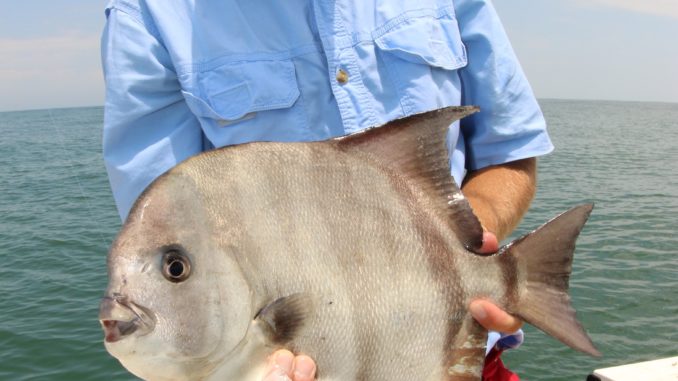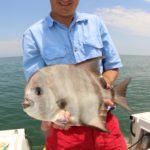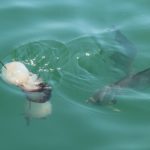
Spadefish are great, nearshore summer targets
That’s the fish right there that you want me to hook? I’m gonna yank him straight into the boat,” an angler told guide Robert McCarley one day last May, while fishing a nearshore reef out of Georgetown.
McCarley chuckled and assured his client that it wouldn’t happen quite that way. The angler set the hook and was immediately connected to a fish he expected to simply sail into the boat on his hookset. To the contrary, the fish peeled line off and ran like a greyhound, making the drag of the 3000-series spinning reel scream.
It is a common experience for anglers fishing for spadefish on the Grand Strand’s nearshore reefs.
“It’s a unique fishing experience, because even though we’re in 40 feet of water, sometimes deeper, you can see the fish just a few feet away from the boat,” said McCarley, who runs Reel Tight Charters (843-458-4157), “and while it does look as though setting the hook will yank the fish straight into the boat, it’s not going to happen with spadefish. These fish are strong and will pull drag off your reel as soon as they’re hooked.”
It’s also not a year-round fishery. Spadefish begin showing up in late April, and fishing is quite good by May and continues through the summer. The toughest part about catching spadefish is not finding them, but finding jellyball jellyfish, the main thing that attracts these oversized saltwater panfish.
“You’ve got to find jellyballs if you want to catch spadefish. It’s just that simple,” McCarley said.
Some days, it’s easy to find jellyballs, and other days, you really have to put in more time and effort. Sometimes, they are just off the beaches; other times, they are in the open ocean side of the surf. Sometimes they are plentiful, and sometimes they are sparsely scattered about. To McCarley, it can be the most stressful part of a spadefish trip, but it can also be the easiest depending on the day.
“There is really no rhyme or reason. Some days, they are simply easier to find than others,” he said.
Once he finds some jellyballs, McCarley scoops them up into a landing net and stores them in a 5-gallon bucket. As soon as he gets about a dozen, he heads to one of the nearshore reefs.
Rather than putting bite-sized morsels of jellyballs on a hook, then lowering it to the depth where spadefish are holding, he threads several jellyballs — about the size of grapefruits — onto a coat hanger that’s been straightened out. McCarley ties a 4-ounce sinker to the bottom of the coat hanger, ties some heavy duty line to the top and lowers the contraption next to the boat and down to the reef structure.
“You’ve got to tie that sinker on there because the jellyballs are very buoyant. It takes some weight to get them to sink, and you want to have it tied onto an offshore rod-and-reel,” he said.
“Once you start to feel fish picking at those jellyballs, you slowly reel up until you can see the jellyballs. You’ll see the spadefish then, too, but just gradually bring it all up, or you can scare them away,” McCarley said.
Next, he puts the rod in a rod holder, suspending the jellyballs just below the water’s surface. Spadefish will swim around the jellyballs, biting at them. Now it’s finally time to start fishing.
With small pieces of cut jellyball on a 1/0 circle hook, anglers toss baits to the spadefish. It usually doesn’t take long for one to pull away from the jellyballs and bite the baited hook, and when they do, it’s the beginning of a fight an angler will not soon forget.
“Now it’s just a matter of letting the fish tire itself out. It will run and peel line against the drag. Don’t reel as long as it is running. Reel when you can gain some line back, but let him run when you can’t. Fighting against the drag will wear the fish out,” said McCarley.
These spadefish are between 3 and 6 pounds, with bigger ones mixed in. McCarley uses spinning reels in the 2000 to 3000 series range, 20-pound test line, and 1/0 circle hooks. His top spots this month include Paradise Reef, Pawleys Island Reef, North Inlet Reef, and Hector Reef.






Be the first to comment